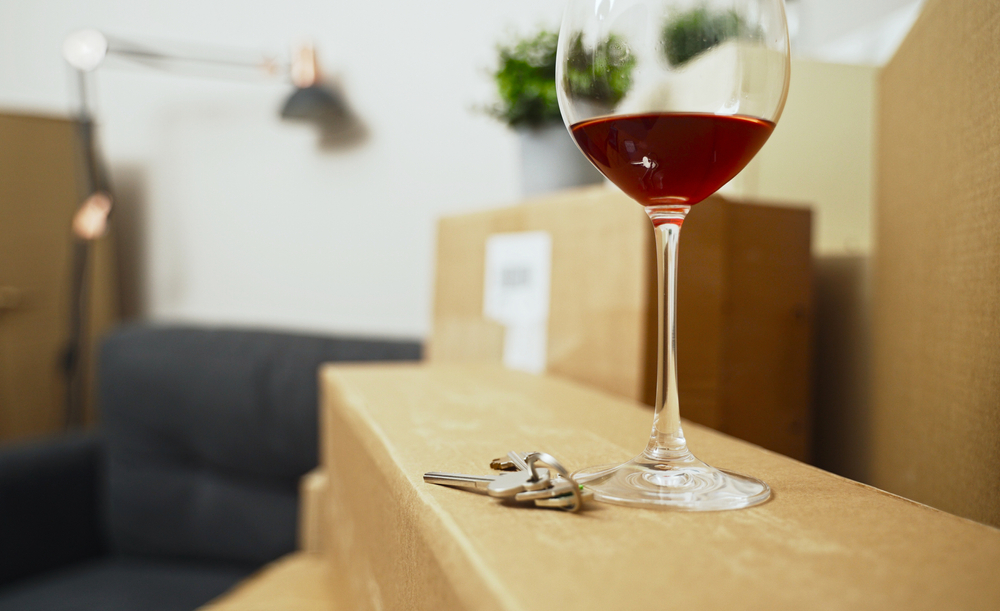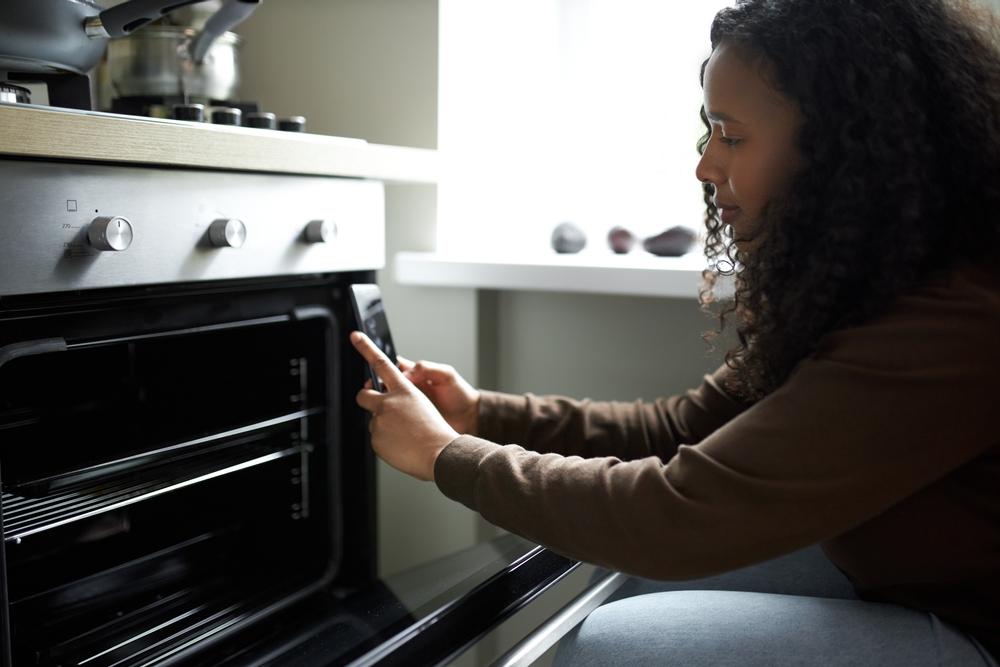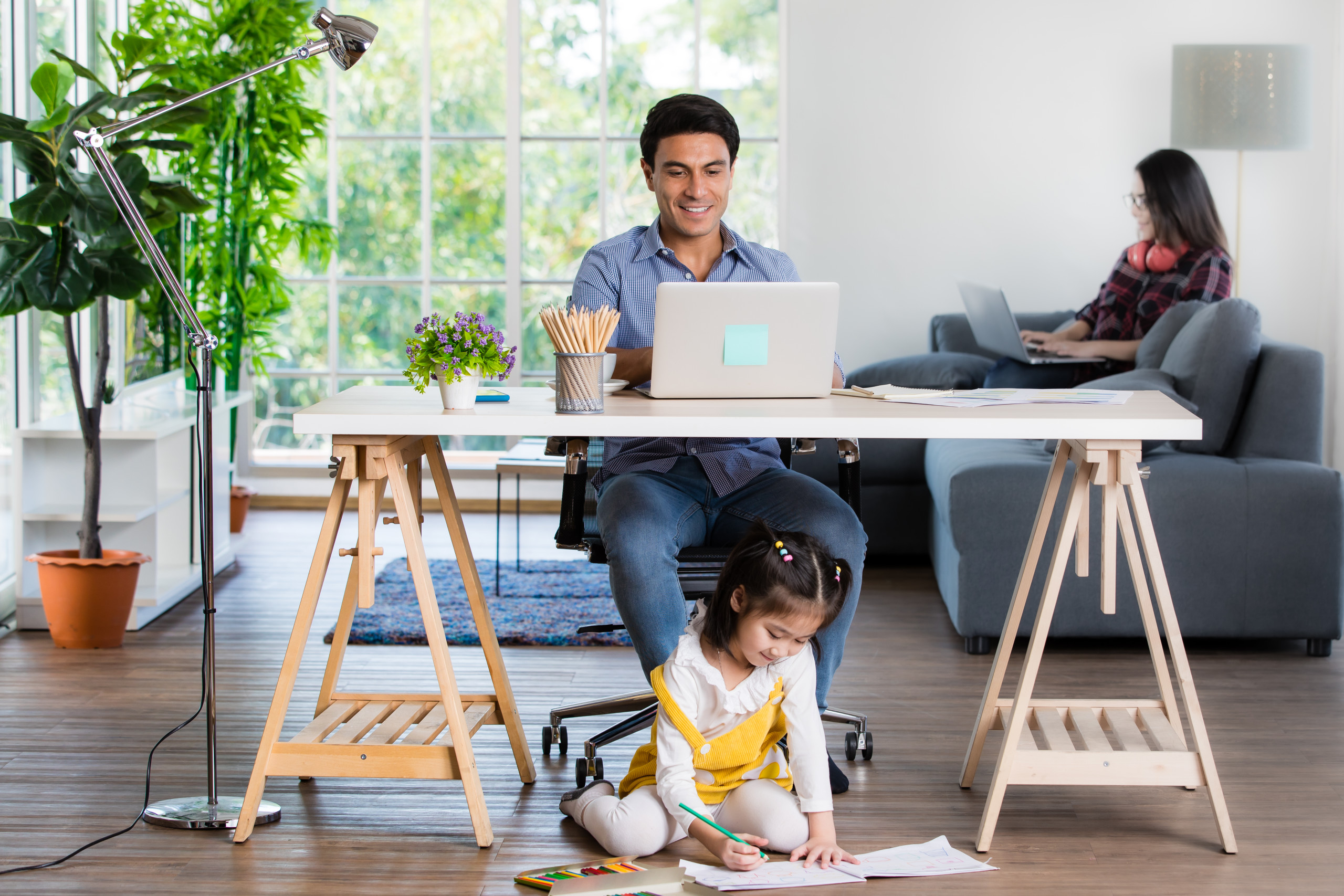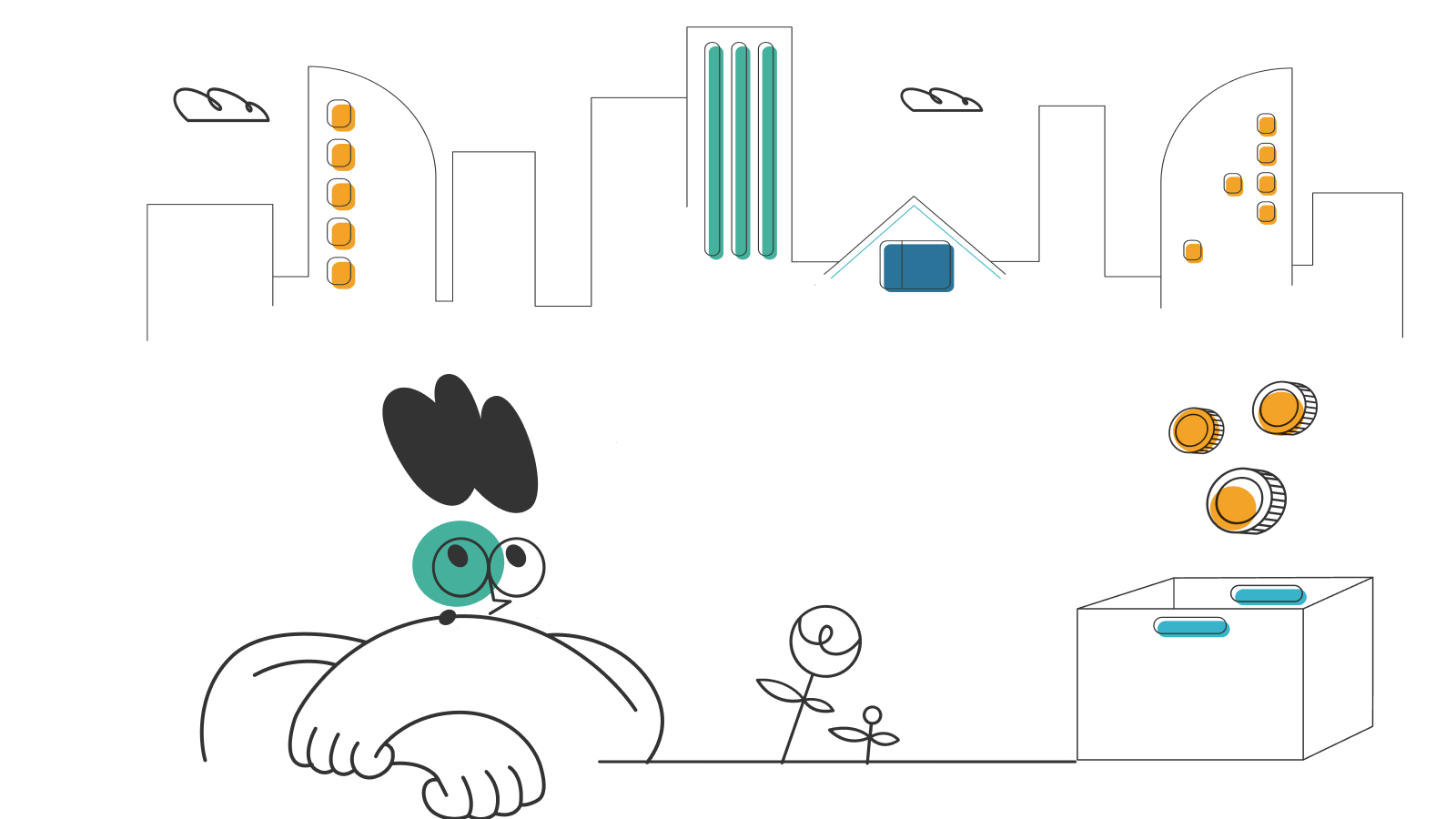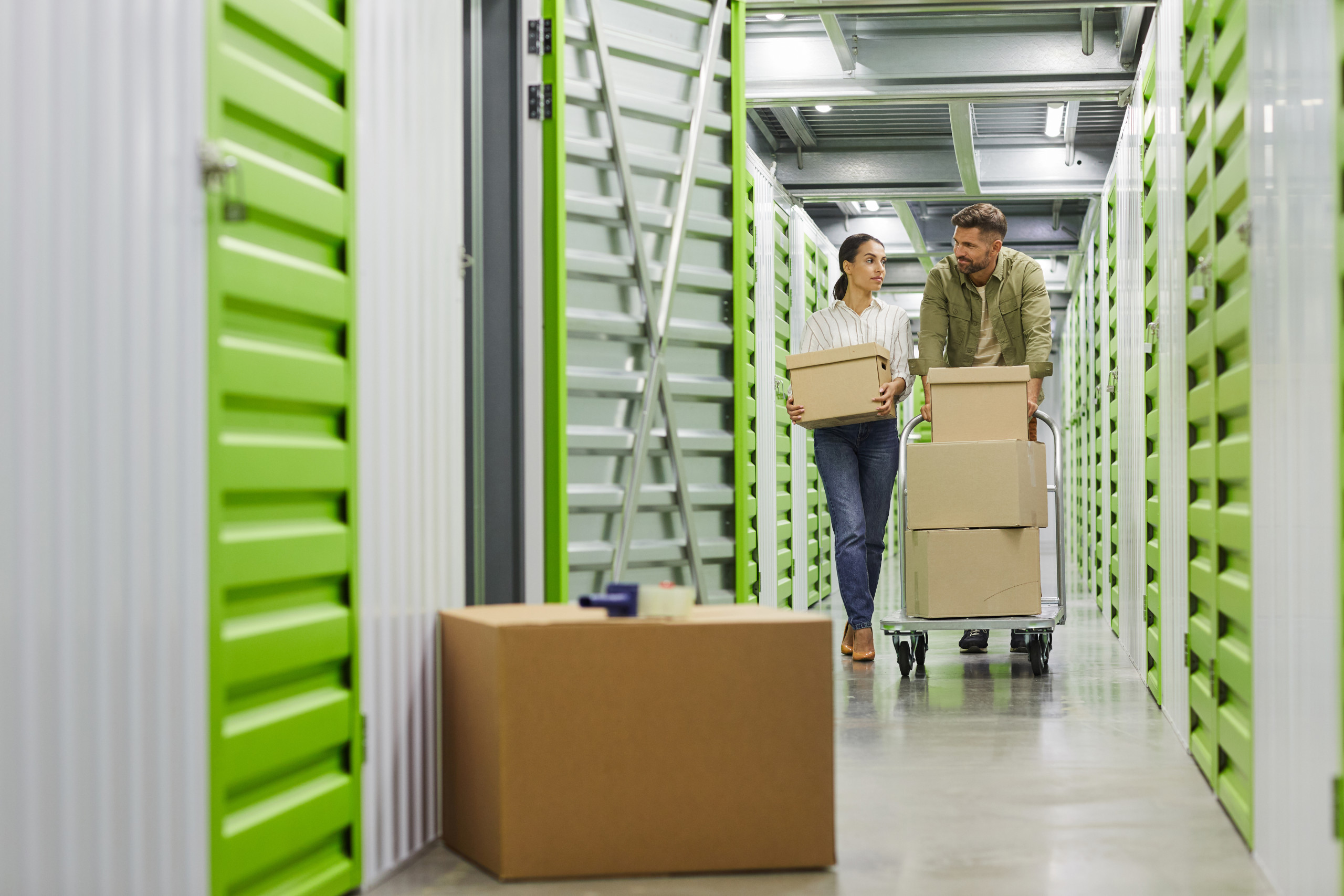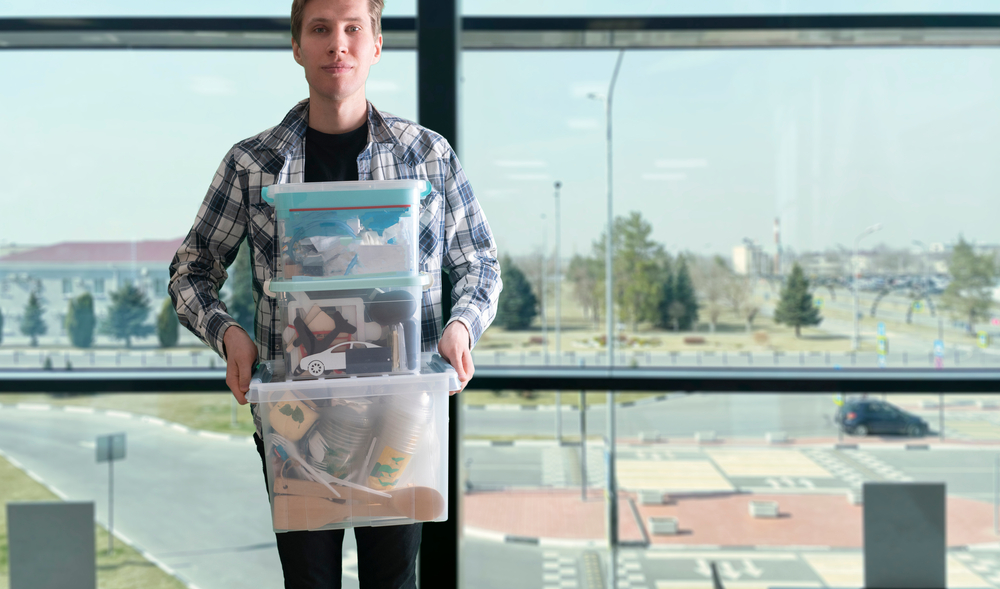Top 50 Moving Hacks of All Time
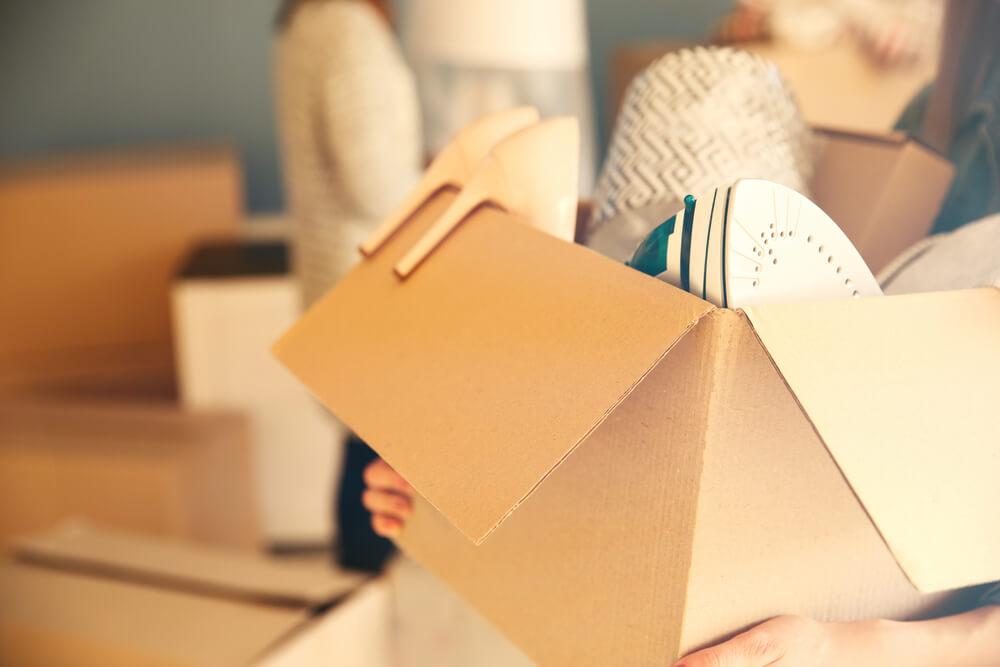
Moving soon? Get organized with our free moving checklist.
While it’s an exciting time for a change, moving can be chaotic and frustrating. A recent survey by OnePoll found that 45% of people consider moving the most stressful life event, followed by a breakup or divorce (44%) and getting married (33%). There are so many details involved that it’s easy for even the most organized individual to make mistakes.
The good news is that there are ways to work smarter and make the moving process less stressful. Life is better when you’re always prepared, and that also applies to moving. In this guide, you will find 50 hacks to get you started on the right foot.
- Getting ready to move
- Get your deposit back
- Get rid of stuff
- Save money and time while packing
- Moving day hacks
Getting ready to move
1. Decide between DIY and professional help
You’ll need to accomplish a lot during the move, but first, think about whether you’ll hire professional movers or rent a truck. Either way, get at least three quotes from three different companies. We recommend making this decision at least seven weeks before the move.
2. Plan your meals
Eat as much of the food in your house as possible for 2-3 weeks before your move. Plan your meals around the perishable items, frozen foods, and half-open containers around the kitchen. You can get creative and see how many new recipes you can come up with. You can also donate unexpired and unopened food to the local food bank.
3. Create a moving checklist
A moving checklist will serve as a guide and keep you organized throughout the process up to the moving day. The checklist should include a timeline, which looks different for everyone depending on how much notice is given. Some people have three months to move while others have three weeks. While at it, create a realistic moving budget.
4. Update your address
A crucial aspect of moving is updating your address several weeks in advance. This will ensure you don’t face potential hassles like service lapses and missed bills. You’ll want to start by notifying the post office of your change of address. You should also update your address for all your accounts, subscriptions, and utilities.
Get your deposit back
If you are renting, you can do a few things to ensure you get your deposit back. Below are a few tips:
5. Take photos of your old place as you move out and the new place as you move in
6. Fill holes in the walls using toothpaste, ivory soap, and other items
7. Use a slice of bread to pick up any pieces of broken glass the broom might have missed
8. Dry-patch the walls after removing any wall hangings. Landlords usually see this as a sign of good faith.
9. Place ice cubes on carpet dents, let them melt, then use a spoon to scoop out the fibers
10. Remove carpet stains using a mixture of 1 part hydrogen peroxide, two parts water, and oil. Spray the mixture onto the stain, let it sit for a minute, then scrub it off.
11. Wrap a rubber band around the hammer when removing nails to prevent scuffing.
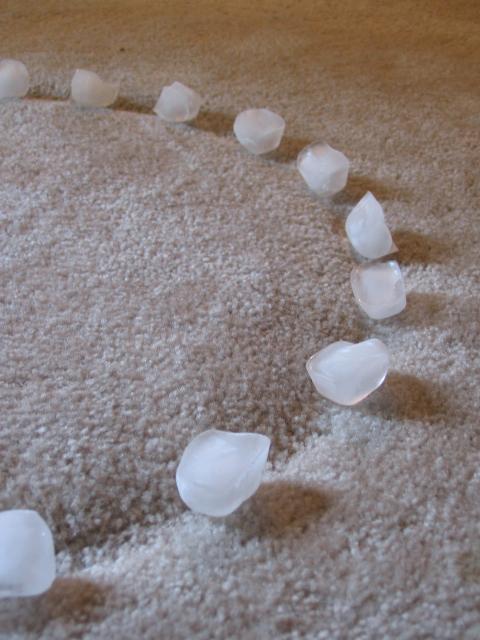
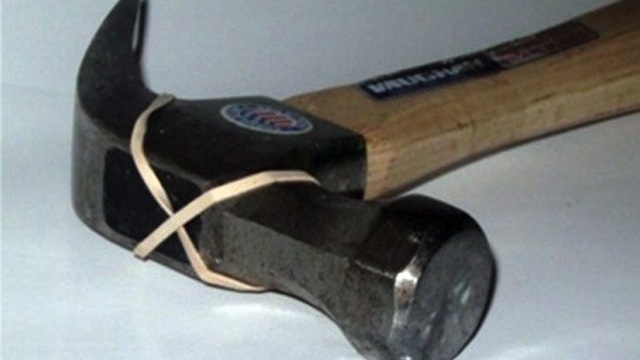
Get rid of stuff
Moving is so much easier when you organize your belongings, donate what you don’t need, and trash what’s damaged beyond repair. Here are a few tips to get you started.
12. Sort your belongings room by room
Go through every room’s closets, cabinets, and drawers, noting what can stay and what needs to stay. Next, inventory your furniture and other furnishings, noting what isn’t worth taking to the new house with you. Get rid of any furniture pieces that can’t fit into the new house as well.
13. Purge your closets
Get rid of anything that is out of style, doesn’t fit, or you haven’t worn in a year. The same rule applies to closets and cabinets in the kids’ rooms, bathroom shelves, and linen closets.
14. Items you wouldn’t buy again
The rule of thumb here is that if you cannot imagine paying money for something, it’s probably not worth having. Trash it if it’s too damaged, or donate it to a charity.
15. Donation pickup arrangements
Schedule a pickup as soon as possible if donating big items like furniture and appliances. As for the items you can commit to getting rid of but aren’t sure you need, consider putting them in a storage unit and evaluating later.
Save money and time while packing
The most time-consuming part of the moving process is packing. The packing tips below are all about saving you time and money while ensuring the safety of your belongings.
16. Set up a packing station
Start by gathering your packing supplies. Include the essentials like packing tape, paper, markers, boxes, scissors, sealable bags, and more. Place all the supplies in one place, such as the dining table, to ensure you don’t waste time looking for them.
17. Find free boxes
People are always trying to get rid of their old moving boxes on sites like Craigslist, Letgo, and Offerup. If you start your search early enough, you’ll be able to accumulate plenty of free boxes for your move.
18. Use the right size boxes
Place the lighter items in larger boxes and the heavier items like books in smaller boxes. This will make it easy to organize and pack the boxes into the moving truck. Ensure you pack the heavier items on the bottom and lighter ones at the top to avoid damaging the breakables.
19. Bundle the breakables
Use plenty of bunched-up paper and padding when packing fragile items to reduce the risk of breakage. Don’t place them in moving boxes without extra padding. You can use magazines and newspapers instead of packing peanuts to provide extra cushioning.
20. Pack the plates vertically, like records
Packing your plates vertically like a record collection reduces the risk of breakage by evenly distributing the pressure across the box. Be sure to line the box with bubble wrap, wrap individual plates with packing paper, and lay a form sheet between each plate.
21. Put the toaster in a bag
Putting the toaster in a bag before placing it with other appliances will keep the crumbs from making a mess.
22. Use linens, towels, and sheets to pack items
Rather than spend a lot of money on packing paper, use what you already have to protect some items (not bowls, dishes, or plates).
23. Label the top and side of moving boxes
Labeling the top and sides of moving boxes makes them easier to identify during the move. The movers won’t have to twist the boxes sideways or pull them from a stack to find the top label. You can use colored packing tape like Smart Move Tape for this purpose. Be sure to include which room each box belongs to.
24. Take photos of your electronics
It’s not always easy to remember how your electronics are assembled and what cords go where. Taking photos before disassembling them ensures that you remember how to assemble your electronics once you get to the new house. The same applies to furniture parts and accessories.
25. Number the moving boxes
Numbering your boxes along with making a corresponding list of what’s in each box makes it easier to ensure you don’t forget one of the boxes. It also makes it easier to know if and when somebody steals one. Moreover, the corresponding list of what’s in each box ensures that you don’t broadcast to the world which boxes contain the more valuable items.
26. Vacuum seal out-of-season clothing
Vacuum sealing reduces the amount of space the out-of-season clothing will take up while making it easier to store in the new home.
27. Cushion bowls and cups with coffee filters
Coffee filters are affordable, readily available, and likely to take up space in the cupboard. Put them to good use when moving by placing a few filters between stacked bowls and cups. This will prevent cracks and breaks in transit.
28. Cover toiletry bottles with plastic wrap
Toiletries and other liquids tend to break open or slowly leak all over other items during transport. A great way to prevent this is unscrewing the bottles, covering the openings with plastic wrap, then reattaching the lid.
29. Shrink-wrap lightweight items together
Use vacuum-sealable bags or industrial strength wrap to pack light and bulky items like beddings, blankets, and pillows into manageable piles.
30. Protect picture frame corners
Foam pipe insulation or spare pool noodles provide extra padding that keeps your picture frames from banging together and breaking while in transit. Simply cut and slide them onto the exterior frames of your pictures and mirrors.
31. Pack an overnight bag with all the essentials
Chances are you’ll be too tired to unpack on moving day. You’ll want your essentials within easy reach, especially if you must go to work the following day. Ensure you pack a change of clothes and toiletries. This is also a great way to transport your laptop or tablet.
32. Pack the items you’ll need first in a clear plastic bin
Some of the essentials you might need on the first night in your new home include phone chargers, eating utensils, select cookware, paper towels, trash bags, toilet paper, and power strips. Putting them in a plastic bin makes them easy to locate among many moving boxes.
33. Use straws to keep jewelry from knotting
Taking extra care of your jewelry can keep them from getting knotted, tangled, or broken. Place your necklaces on a small towel and roll them up or place them through straws to keep the chain from tangling. A plastic pill case is excellent for storing and transporting small jewelry items like earrings and rings. Keep these items with you rather than in a moving box.
34. Protect your floors with furniture sliders
Placing furniture sliders under the heavy and bulky items in your home makes it easy to move large items across hardwood, tile, linoleum, and carpeted floors. They protect the floors from scuffing. You can also use them in the new house as you figure out where the furniture fits in different rooms.
35. Pack and organize the small stuff
Ziplock bags are ideal for packing and protecting furniture screws, important papers, and cords, among other small items. You can also reuse them to organize small items after the move. The key to making this work is labeling. For instance, you can label cords individually and group them in labeled bags by device or gadget.
36. Bag your closet
Perhaps the fastest way to pack up your closet is by sliding clothes on hangers into garbage bags. Skip the white kitchen trash bags as they tear easily, and use the heavy-duty outdoor trash bags. Unpacking them will be a breeze as well.
37. Keep wires and cords organized using toilet rolls
An empty toilet paper can make your life so much easier regarding your cord situation. Simply wrap your cords neatly before tucking them into an empty toilet paper tube. Ensure you label the roll with the corresponding device to take the guesswork out of identifying which cables go into what gadget when you move.
38. Pack your TV carefully
It’s best to transport your electronics, such as TV, in the original box they came in, complete with the Styrofoam. If you don’t have one, wrap the TV in a moving blanket to give it padding and keep it propped up rather than lying down. You can achieve the latter by wedging the wrapped TV between soft furniture items like couch cushions or mattresses.
39. Remove what you can from large items
Removing fixtures and accessories from the larger items makes them easier to transport. Some furniture pieces have removable backs or legs. You can also take off the pillows and cushions from your couches and park them in garbage bags or large boxes.
40. Prepare your dressers for the move
It’s best not to remove the drawers from your dresser. That way, it’ll only take one trip to transport the piece of furniture. Wrap the dresser with a moving blanket, then tape the padding in place to keep the drawers from falling out while in transit. The padding will also protect against dings and scratches. If the dresser has a mirror, remove and pack it separately.
41. Take the toner and cartridges out of the printer
This will ensure that if ink spills out, it doesn’t damage other office supplies.
42. Don’t pack these items with other belongings
Some items can be hazardous to move, so it’s best to transport them separately or dispose of them. Keep bottles and medications together. The same goes for tools, cleaning chemicals, and painting supplies. You might want to use plastic totes to keep messy leaks and dangerous leaks at bay. Other items to pack separately include;
- Paints and varnishes.
- Heating agents.
- Fire extinguishers.
- Chlorine granules.
- Auto batteries.
Moving Day Must-Do Moving Hacks
Moving day may not be a complete cakewalk, but these hacks will get you close.
43. Start your day early
You need to be well-rested on moving day, but sleeping until ten in the morning isn’t an option. Get your day going as early as possible to ensure you have enough time to tackle everything on your moving day checklist.
44. Make child and pet sitting arrangements
Children and pets bring a lot of joy into our lives. But when it comes to moving day, you’re much better off if they are not on site. Have a trusted family member or friend take over sitting duties for the time it’ll take to load and unload the moving truck.
45. Practice proper lifting
Ensure you lift moving boxes properly because failure can result in an injury. Get help if the box is too heavy or you’re nervous about carrying it down the stairs alone.
46. Have cash to tip movers
Professional movers work extremely hard, and tipping them on top of the usual pay is a great way to show appreciation. They won’t be able to accept tips by cheque or credit card, so have some cash on hand. At least $20 per mover handed to them individually will be highly appreciated.
47. Be ready to go before the moving truck arrives
You don’t want to derail your moving day schedule by having your friends, family, or movers wait around as you finish packing. Consider the arrival time of the moving truck as the non-negotiable deadline for having your house completely packed up.
48. Ensure your phone is charged
Moving day is not the day to have your phone die on you. And while having your charger easily accessible helps, it’s best to have your phone charged and ready to go all day. You’ll need it to coordinate moving logistics with friends and family or pick up the moving truck rental.
49. Keep the doors unlocked
It’s easier to open doors with your hips when carrying boxes. Putting a rubber band around the doorknob will keep it from latching every time you carry a box out the door.
50. Use a rubber-wheeled dolly
Carrying boxes on moving day will undoubtedly strain your back while dragging them will scuff the floors. Using a rubber-wheeled dolly is a more efficient solution to protect against both risks. You’ll be able to transport multiple boxes in the time it takes to carry one, thus saving you time.
There you have it! These top 50 moving hacks will make your life easier as you start a new chapter.


